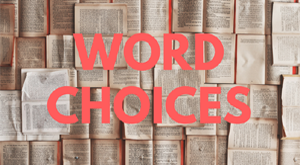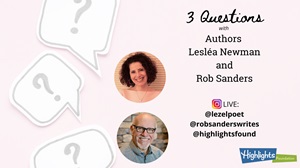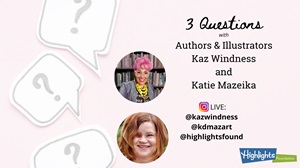Because each word in a picture book is at a premium, choose words that do double duty. Perhaps the words convey the action but also echo a mood of the piece or the feeling of a character.
“Big chickens run across a field.”
Compared to:
“Big chickens tiptoe across a field.”
Changing the verb to “tiptoe” adds tension and conveys the idea that these chickens are trying to get away with something–all that extra info with one word!
PLACEMENT OF WORDS
Another idea to consider is the placement of the power word in a sentence. What word is most important? Should it be at the beginning middle or end of a sentence?
She needed to stop running.
Compared to:
She needed to stop.
The first example puts STOP in the middle of the sentence, which weakens the meaning and instead emphasizes the running. In the second sentence, STOP is a one-syllable word that ends abruptly. Reading that sentence transforms the words into an experience of stopping.
RHYTHM OF WORDS
By adjusting rhythm, word choices can direct where a reader should pay attention.
But I have to admit, two DOES sound like fun
Compared to:
But I have to admit that TWO sounds like fun.
Rhythm matters even if you are not writing in rhyme. Where do you want the emphasis to fall? On the word TWO or the word DOES? TWO makes a more powerful impact especially if this is a counting book or involves numbers. Keep the emphasis on key words when possible. To complicate your word choices, you should make your words fall into line like a natural speech pattern.
SOUND OF WORDS
Phonics plays a part too. Higher vowels like long a (gate), long e (see) and short i (pig) are building blocks for rising action while lower tones such as long oo (boot), ah (fog), and short oo (book) can bring home a line.
“Four big chickens strutted all the way home.”
Compare to:
“They strutted home like four big chickens.”
In the first example, the low tones in HOME make it a good closing word. The second sentence leaves an unsettled feeling, as if something else should follow.
In general, the higher vowel sounds are light and airy instead of grounding like lower tones. Sometimes, thank goodness, we do this unintentionally and don’t even know why one way sounds better than the other but if we dig around, we’ll find that it is tonal or related to phonics.
We love playing with words and the more we play with them, the more powerful we find them to be. They go far beyond definition–shape, length, mood, sound all play a part in making a good story one that is a joy to read.
Word Choice is also covered in our upcoming mini course, Picture Book Essentials. It will be held on July 18 + 20, 7-8:15pm EST (with recordings available after the course for those who cannot attend live). We hope to see you there!








